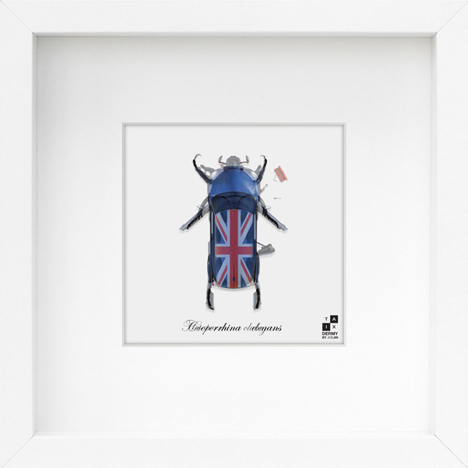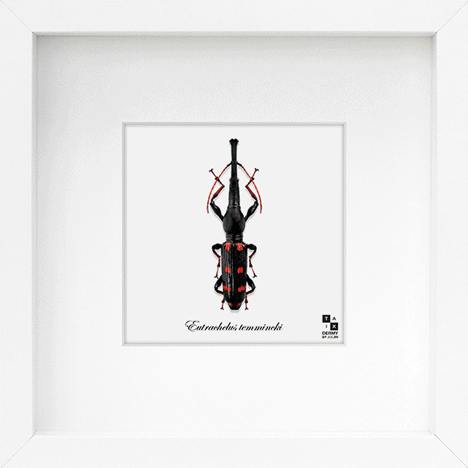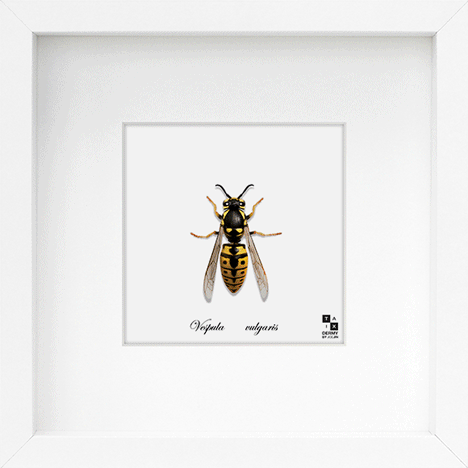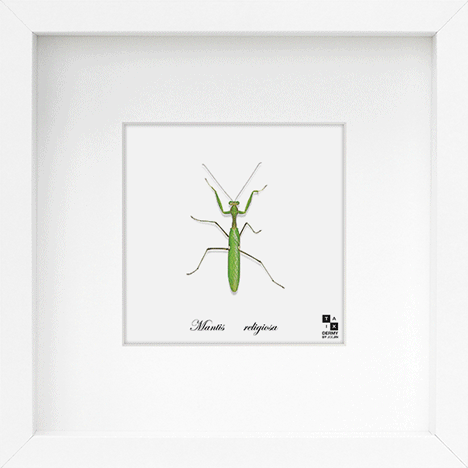
Taxi-Dermy Lenticular Prints by Joe Jin
Insects including a weevil and a wasp transform into cars and motorbikes in these lenticular prints by Canadian design studio Joe Jin.

The Taxi-Dermy lenticular prints change depending what angle they're viewed from and are inspired by the way aerial views have become commonplace in high-rise cities such as Toronto, where Joe Jin is based. "From above, automobiles that dot the city streets below begin to resemble insects," explains the designer.

The collection includes a wasp turning into a BMW motorbike, a weevil becoming a Formula 1 racecar and a praying mantis turning into a Kawasaki motocross bike.

There's also a beetle that turns into a Mini Cooper Clubman, the 'stretch' version of the Mini, which we featured in 2007.
Joe Jin studied architecture at the University of Toronto and worked as an architect for several years before setting up his own design studio in 2012.
We previously featured lenticular prints used to create maps of Beijing's disappearing ancient alleyways as part of Beijing Design Week.
We also featured several projects involving insects on Dezeen, including porcelain containers based on insect eggs and posters based on the movement patterns of woodlice and crickets – see all our stories about insects.
See all our stories about graphics »
See all our stories about design »
Here's some more information from the designer:
With over 150 residential high-rises and skyscrapers currently under construction, Toronto, Canada is experiencing unprecedented growth in the history of the country's largest populated city. As apartments and condominiums become synonymous with city living, from several storeys up, city residents are privy to a view that was once less accessible but has now become commonplace – the aerial view. From above, and at a height of 150-240m (or 50-80 storeys; the new standard in Toronto condominium development heights), automobiles that dot the city streets below begin to resemble insects. Taxi-Dermy lenticular prints were designed as a playful acknowledgement of this new reality that we, along with the residents of most other major metropolitan cities, now find ourselves in.
Taxi-Dermy (pun intended) lenticular prints playfully merge two objects, one living and the other man-made – the insect and the automobile; seemingly different but eerily alike when scales are blurred. Aerial stock photos combine with lenticular lens printing to create artwork that appears as a taxidermy insect at first glance, then morphs into an automobile when viewed from different angles. Four 3D transforming prints to collect - Heterorrhina elegans (beetle) to Cooperrhina clubmans (Mini Cooper Clubman); Vespula vulgaris (wasp) to Vesportbike bimmeris (BMW sportbike); Mantis religiosa (praying mantis) to Motocross kawigiosa (Kawasaki motocross); and Eutrachelus temmincki (weevil) to Racetrackelus grandprix (Formula One). Each lenticular print comes framed in a shadow box and ready-to-mount.